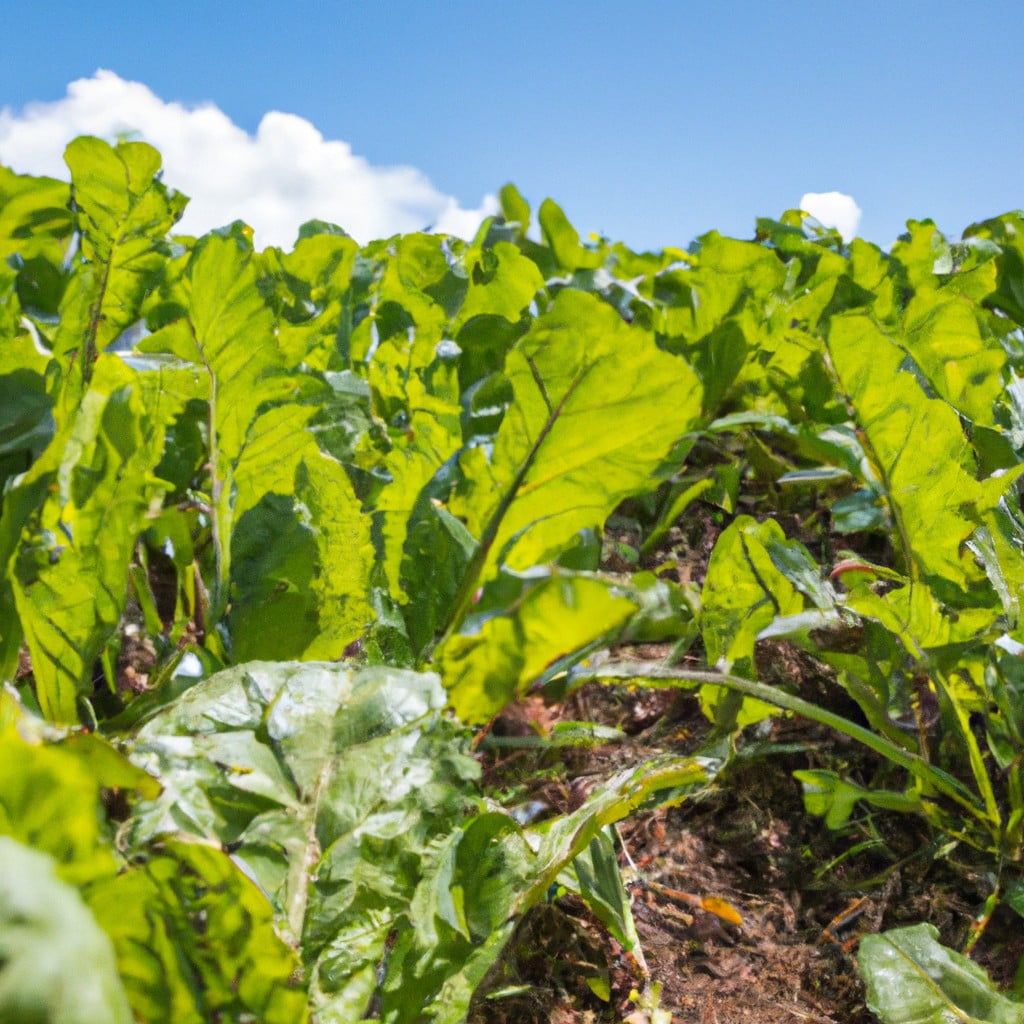Regenerative farming may incorporate organic practices, but it goes a step further by actively improving the health of the soil and the ecosystem, not merely maintaining them.
Regenerative farming and organic farming, though they share common goals of environmental sustainability and healthier food production, are not exactly the same. While organic farming focuses on avoiding synthetic pesticides and fertilizers, regenerative farming goes a step further. It emphasizes improving soil health, biodiversity, and ecosystem resilience. It’s a holistic approach that can incorporate organic practices, but also includes methods such as cover cropping, crop rotation, and reduced tillage.
So, while all regenerative farms are not necessarily organic, they all aim for a sustainable, nourishing agricultural system. Stick around to delve deeper into the nuances and benefits of these farming methods.
Key takeaways:
- Regenerative farming improves soil health and ecosystem resilience.
- Regenerative farming goes beyond organic farming practices.
- Organic farming focuses on avoiding synthetic pesticides and fertilizers.
- Regenerative farming enhances biodiversity and strengthens resilience to climate volatility.
- Regenerative farming practices include reduced tillage, cover cropping, and diverse crop rotation.
Look Inside:
Defining Regenerative Farming

An agricultural method, regenerative farming is designed to restore soil health, increase biodiversity, enhance ecosystems, and mitigate climate change. It uses a range of techniques to stimulate soil fertility, from no-till practice and cover cropping to diversified crop rotations and well-managed grazing systems.
This approach reduces the need for synthetic fertilizers and pesticides, and prioritizes soil restoration, carbon sequestration, and water cycle management. Its end goal is a vibrant, robust farm ecosystem that is resilient and regenerative, quite literally breathing new life into the landscape.
Unpacking Organic Agriculture
Organic farming prohibits the use of synthetic pesticides and genetically modified organisms. Rather, it leans on techniques such as crop rotation, green manure, compost, and biological pest control.
Organic standards are internationally recognized and certified, giving consumers confidence in the safety and sustainability of their food choices.
Organic farming is undeniably crucial for our planet’s health, serving as the foundation for sustainable agriculture by reducing chemical inputs into the environment.
Nonetheless, it has certain limitations, primarily that it concentrates on what cannot be done (use synthetic inputs) rather than proactively improving the soil and ecosystem.
This is where regenerative farming can complement and enhance the benefits of organic farming.
Comparative Analysis: Regenerative Vs Organic Farming
Organic farming typically prohibits the use of synthetic fertilizers, GMOs, and pesticides. It maintains a focus on environmental sustainability by aiming to preserve natural processes and resources.
Regenerative farming, on the other hand, adds another layer by bolstering the soil’s capacity to capture and store carbon in addition to improving soil health. This method uses practices such as cover cropping, diverse crop rotation, and reduced tillage, which help to improve ecosystem health and strengthen resilience to climate volatility.
Regenerative farming, therefore, not only sustains but elevates the ecological stability of farming systems. While both have their merits, it is clear that regenerative farming builds on the strengths of organic farming to enhance biodiversity and fuel robust food systems.
Key Principles and Practices in Regenerative Farming
To enhance soil fertility, regenerative farming heavily relies on four main practices. First, reduced tillage (or no-till farming) mitigates erosion and fosters a thriving soil microbiome. Next, cover crops are incorporated in crop rotation, serving multiple functions including erosion control, nitrogen fixation and weed suppression.
Furthermore, the practice of incorporating livestock, such as managed grazing or integrated crop-livestock systems, promotes a cyclical nutrient flow. Finally, farmers promote agrobiodiversity by cultivating a variety of crops and livestock species. It’s a suite of practices that uphold soil health, boost crop resilience, and nutrient density.
This farming philosophy’s success hinges on understanding and working with natural ecosystems to enhance agricultural productivity.
Regenerative Agriculture Focuses On Outcomes
This approach considers the end-result of farming practices on overall soil health and ecological balance. A farm that applies regenerative methods aims to have a net positive effect on climate change by sequestering more carbon in its soil than it emits.
Additionally, it aims to enhance biodiversity, as well as water cycles, to create a healthier and more resilient ecosystem.
Lasty, these farms often foster stronger local communities by promoting direct relationships between farmers and consumers – championing an impactful, outcome-focused approach to sustainable agriculture.
Certification and Standards: Organic Vs Regenerative
The standards for certifying a farm as ‘organic’ are well-defined and universally recognized. They involve avoiding synthetic substances like pesticides and fertilizers, and maintaining certain ecological practices over a three-year conversion period. Laboratories conduct regular tests to confirm that these standards are met.
On the other hand, there isn’t a universally accepted certification for regenerative farming yet. Several organizations offer their own certifications, such as the Regenerative Organic Certification, but these are not as widely acknowledged. The main reason for this is the broad scope of regenerative farming, which does not limit itself to the avoidance of synthetic substances but rather incorporates a holistic methodology of soil enhancement and ecosystem regeneration. This holistic approach can often make it difficult to standardize and measure regenerative farming practices.
Future of Agriculture: Synergy of Organic and Regenerative Farming
As we look towards a more sustainable agricultural future, the incorporation of both organic and regenerative farming principles holds great promise.
Diversifying agricultural practices and acknowledging the value of both methods can lead to a synergy where organic regulations provide a firm baseline, and regenerative practices take it a step further by actively enhancing the soil and local ecosystems.
Optimized farm management systems that combine these two approaches can result in improved soil health, reduced erosion, increased crop yield, and enhanced resilience to climatic changes.
They also have important implications for carbon sequestration, playing a crucial role in mitigating climate change.
Promoting this integrated approach requires holistic policy changes, industry support, education, and research.
Through such efforts, a synergistic relationship between organic and regenerative farming can truly revolutionize our agricultural lands, contributing to a sustainable and resilient food system for future generations.
FAQ
Does regenerative agriculture use pesticides?
Regenerative agriculture does not use pesticides as it prioritizes natural farming techniques that include cover crops and mulch.
What is organic regenerative agriculture?
Organic regenerative agriculture refers to a holistic farming approach that emphasizes soil health and farm ecosystem restoration through practices such as cover cropping, crop rotation, low-to-no tillage, composting, and avoiding persistent chemical pesticides and fertilizers.
What is the difference between organic sustainable and regenerative farming?
Organic sustainable farming focuses on the outcome, mainly producing pesticide-free, naturally grown crops, while regenerative farming emphasizes restorative processes that go beyond the conventional to improve soil health, biodiversity, and carbon sequestration.
Why is regenerative organic?
Regenerative organic agriculture is a method that helps combat climate change by enhancing carbon sequestration capabilities of soil via the cultivation of trees, cover crops, and the promotion of microbe-rich soil.
How does regenerative farming enhance soil health compared to traditional organic farming?
Regenerative farming enhances soil health compared to traditional organic farming by replenishing soil nutrients through diverse crop rotation and cover crops, reducing erosion with no-till practices, enhancing biodiversity, and sequestering carbon in the ground.
What specific practices constitute regenerative agriculture as opposed to sustainable organic farming?
Regenerative agriculture practices primarily involve improving soil health, enhancing biodiversity, supporting water conservation and sequestration, and increasing resilience to climate change, whereas sustainable organic farming mainly focuses on maintaining soil productivity, with no pesticides or synthetic fertilizers, and minimal environmental impact.
What are the environmental and economic benefits of transitioning from conventional to regenerative organic farming?
Transitioning from conventional to regenerative organic farming offers critical environmental benefits like improved soil health, enhanced biodiversity, and better water management along with economic benefits like increased profitability through reduced input cost and higher premiums on products.




